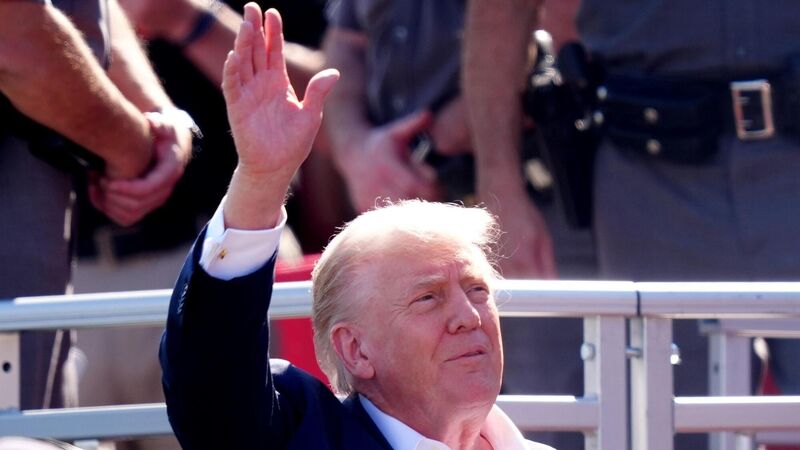David McNamara: Global outlook improves after turbulent six months

US president Donald Trump attends the Ryder Cup in Farmingdale, New York at the weekend. The full effects of Mr Trump’s tariffs may not become apparent until early 2026. Picture: David Davies/PA
With the publication of a slew of autumn economic forecasts, it appears the outlook for the global economy has improved somewhat following a turbulent six months. Most notably, the OECD’s latest projections show a relatively benign near-term outlook, with GDP forecasts revised up compared to it last update in June. It expects global growth to average 3.2% in 2025 (up from 2.9% in June), easing to 2.9% in 2026 (unchanged from June).
For the major economies, the OECD anticipates US growth will slow to 1.8% in 2025 (1.6% in June) from 2.8% last year, followed by a modest 1.5% gain (unchanged) in 2026. Elsewhere, growth in the Eurozone and UK is expected to remain subdued at around 1.0-1.5% in the near-term.
While the OECD report notes that growth has been “more resilient than anticipated in the first half of 2025”, it also warns that the full effects of higher US tariffs have yet to be felt, and that there are signs of weakening in labour markets – particularly in the US.
Overall, though, the report concludes that the weight of investment in emerging AI technology is offsetting the negative impact of tariffs in the US. This outlook chimes with the recent communications from the major central banks, which underpin their cautious stance for further rate cuts.
While the Fed is expected to implement two further cuts in 2025, it is likely to move slowly thereafter to its expected neutral rate of 3%. Meanwhile, the ECB and Bank of England see few signs, as yet, of major weakening in their respective economies to merit further monetary policy easing.
The upshot is the global economy is in something of an interregnum after the flurry of Trump tariffs. A surge in exports to the US and stockpiling by firms has boosted GDP in Europe and Asia. This has delayed the expected US price increases stemming from new tariffs, and it remains an open question as to how the costs will ultimately distribute between exporters, wholesalers and consumers.
In that context, the full effects may not become apparent until early 2026 as stockpiles run down and firms review pricing strategies.
The most recent inflationary surge in 2021/22 saw firms rapidly passing on price increases to consumers, who were flush with wealth built up during the Covid-19 lockdowns, and eager to satisfy a wall of pent-up demand. This savings glut enabled households to weather the sharp price increases during that period, but this may not be repeated given the current softer US labour market, if a fresh inflationary surge arrives in the coming months. That might mean weaker demand offsets some of the supply shock of higher tariffs on consumer prices.










